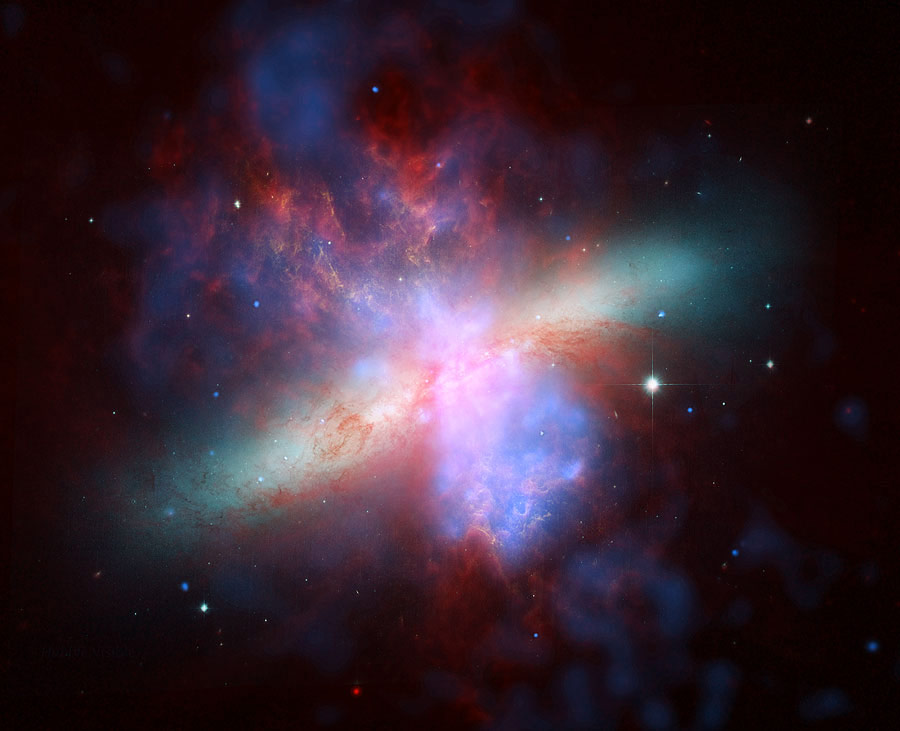Galaxy's Dying Stars Confirm Cosmic Ray Source

Recent photographs of an active galaxy offer new confirmationfor the idea that supernova explosions are the creators of surprisinglyenergetic particles called cosmic rays.
Cosmic rays are protons that whizthrough space at almost the speed of light. They originate far beyond thesolar system, but when some make it past Earth's atmosphere they can carry suchan energetic punch that they knock out electronics systems. Scientists havelong been unsure of the process that ramps the particles up to such greatspeeds, though gathering evidence suggests that these super-fast protonsoriginate during the deathof a star
When a very large star dies, it implodes into a black holewhile expelling its outer layers in a powerful explosion called a supernova. Scientiststhink that some of the energy released during these blasts acts as a sort ofsupercharger, acceleratingparticles to extremely fast speeds and creating cosmic rays.
New proof of this idea has come from recent observations ofthe Cigar Galaxy (M82) by the VERITAS gamma ray telescope array in Amado, Ariz.The galaxy sits about 12 million light-years from Earth in the direction of theconstellation Ursa Major (also known as the Big Dipper). It is a starburstgalaxy, meaning it has exceptionally high levels of star formation.
With so many stars forming in M82, there are also highnumbers of massive stars and supernovas, making the galaxy a perfect testingground for the cosmic ray explanation. If supernovas are responsible for cosmicrays, scientists figured, then a place with moreof the stellar explosions will also have higher concentrations of theenergetic particles.
Indeed, researchers found that the density of cosmic rays inM82 was 500 times that of the Milky Way, confirming the hypothesis.
"This discovery provides fundamental insight into theorigin of cosmic rays," said Rene Ong, a professor of physics at theUniversity of California, Los Angeles, and the spokesperson for the VERITAScollaboration.
Breaking space news, the latest updates on rocket launches, skywatching events and more!
Though the telescope couldn't image cosmic rays directly inthe distant galaxy, the researchers looked for gamma rays, a very energeticform of light produced when cosmic rays interact with gas and radiation withinthe galaxy. They used this measurement to extrapolate how many cosmic rays liewithin M82.
The findings are detailed in the Nov. 1 online issue of thejournal Nature.
- Top 10 Strangest Things in Space
- Video: Supernova: Creator/Destroyer
- Image: Cosmic Ray-Forming Remnant

Clara Moskowitz is a science and space writer who joined the Space.com team in 2008 and served as Assistant Managing Editor from 2011 to 2013. Clara has a bachelor's degree in astronomy and physics from Wesleyan University, and a graduate certificate in science writing from the University of California, Santa Cruz. She covers everything from astronomy to human spaceflight and once aced a NASTAR suborbital spaceflight training program for space missions. Clara is currently Associate Editor of Scientific American. To see her latest project is, follow Clara on Twitter.
